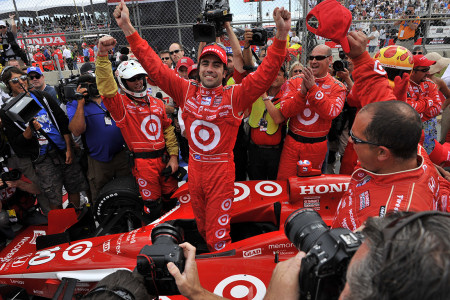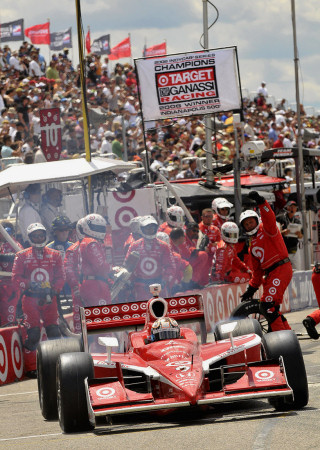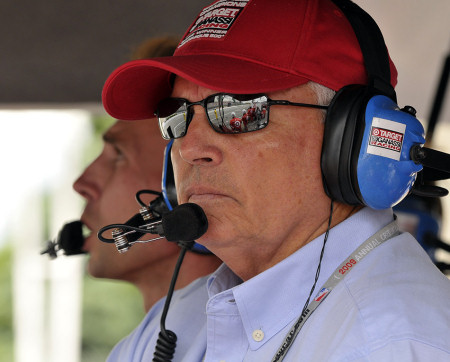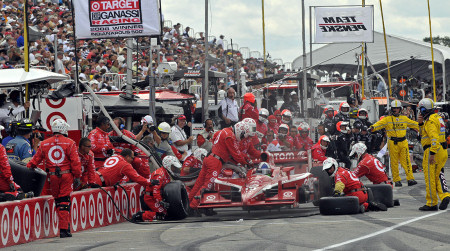The Way It Is/ TCGR's alternate view of the future
by Gordon Kirby It was good to see motor racing return to the streets of Toronto last weekend. First run in 1986, the Indy car race in downtown Toronto boomed through the nineties when CART was at its healthy best and Molson's vigorously promoted the race. But then Molson's pulled out and the race began to flounder amid the final stages of the Champ Car vs IRL civil war. Last year the race didn't take place of course and we have to thank Michael Andretti and Andretti-Green Promotions for stepping up to revive the race this year.
It was good to see motor racing return to the streets of Toronto last weekend. First run in 1986, the Indy car race in downtown Toronto boomed through the nineties when CART was at its healthy best and Molson's vigorously promoted the race. But then Molson's pulled out and the race began to flounder amid the final stages of the Champ Car vs IRL civil war. Last year the race didn't take place of course and we have to thank Michael Andretti and Andretti-Green Promotions for stepping up to revive the race this year.
Andretti-Green's plan was to start quietly with low expectations and rebuild steadily so that in five years the race is as big, it not bigger, than ever. To that end many grandstand seats were removed and there was little of the festive atmosphere of old. Crowds were modest at best with very few on Friday, more on Saturday afternoon following a morning rainstorm, and around 15,000 on raceday.
Despite Paul Tracy's stirring drive from fifteenth to second and Alex Tagliani's even more impressive run to the front in Eric Bachelart's desperately underfunded Conquest Racing entry, the star of the show was Dario Franchitti who scored his second win in Toronto and third victory this year to retake the IRL championship lead from teammate Scott Dixon. At this stage, Franchitti and Dixon are a solid one-two in the championship followed by Penske teammates Ryan Briscoe and Helio Castroneves although the later lost valuable ground thanks to his late-race collision with Tracy in Toronto.
Both Franchitti and Dixon were delighted with their cars in Toronto and the pair of Target/Ganassi drivers probably have been more consistently competitive than anyone else this year, Team Penske included. At mid-season, Franchitti and Dixon are looking awfully difficult to beat to this year's IRL title.

© Gary Gold
Nobody at TCGR is happy with either the IRL's rues fiddling for this year's remaining oval races or the approach to the new rules package for 2012 discussed in this space last week by Brian Barnhart.
"I'm not a fan of the current rule package on the 1.5-mile tracks," Franchitti said. "I'm not sure what the best package would be for the 1.5-mile tracks, but they definitely need to make some major changes."
Added Dixon: "The rule changes they've proposed for some of the ovals are a step in the right direction, but it's only a very small start."
Dixon and Franchitti believe an Indy car is supposed to be an overpowered beast to drive, not an Indy Lights-like spec car. Their belief about what defines an Indy car is shared by many people from champion drivers like Mario Andretti, Johnny Rutherford, Bobby Rahal and Al Unser Jr. to crewmen, engineers and innumerable fans, too.
"I think they've got to step away from making the cars so identical," Dixon remarked. "The way it is today it's almost a glorified Indy Light series, which is not what Indy cars are about. Limiting things like the wheelbase you can run is just ridiculous, and hopefully, they'll open it up a little bit more.
"I can kinda see why they're trying to do it which is to try to make it so the smaller teams can still compete. But it doesn't matter whether the cars are totally different or all the same the small teams still aren't going to be there on an oval. So I don't really understand that.

© Gary Gold
"So I think it's a step in the right direction but a very small step. The teams in this series have all the parts. We've raced very well in the past and I think every team has the inventory of the pieces we were running then. So I don't see why we just don't back-up quite a few steps and try and go back to what we had a few years ago."
Target/Ganassi Racing general manager Mike Hull is equally critical of the IRL's approach.
"In my opinion the IRL needs to be much more aggressive about how they tackle these things," Hull declares. "I think they need to take some big bites, not just fiddle with the details.
"My view is that the bodywork has got to be inside the template period, and that's it," Hull added. "I know I'm going to upset some people when I say that because it will allow you to run any kind of front or rear wing that you want. But you know, if it makes the racing better and fits inside the body template, why not?
"We're not racing for self-gratification. We need to be racing for the public, not ourselves. Why should the IRL tech guys worry whether the wing flap is one way or the other as long as it fits inside the box?"
Looking ahead to the mooted 2012 IRL formula Dixon would love to see considerably more power and much less drag with more downforce generated by the car's underwing than its external wings.
"I think the key thing is the horsepower," Dixon observed. "We're just over 600, or maybe 650, nobody really knows. If you look at the end of the CART days when we had almost 1,000 horsepower, I think we have to get back to that. They're throwing around four-cylinder options but to me that's not what an Indy car is. It might be the direction that technology is going for the consumer but I would prefer a V-8 turbo with more power and more torque.

© Gary Gold
"And you could turn the boost up or down, so you had less power for the ovals but still had 800 or 900 horsepower for street or road courses," Dixon continued. "Having that kind of horsepower brings a hugely different element to it and makes it a lot more difficult for the drivers. It's easier to make a mistake as you're trying to go for the gas. The way it is now on some of the ovals you don't want to lift. You just constantly stay flat because if you do lift you're going to lose a ton of spots and you can't pass anybody.
"I think you need the adjustability of the power for different tracks, and boost is a good way to do that. I think downforce is an area where there are different thoughts about having a lot of downforce or almost no downforce. I think the old Champ car definitely had a good balance. You need to generate more downforce from the underwing as opposed to the wings."
Dixon says the IRL's formula was better six years ago when the series had bigger engines and more power.
"When we first came here to the IRL in 2003 and won our first championship I qualified twelfth at Homestead and went on to win the race, and we passed every car on the track to get there," Dixon remarked. "Back then, you could pass guys you were racing with and you could also pass lapped traffic with no problem. So they really need to look at where that's gone.
"That again was a car with a little more horsepower. When we first came to the IRL we had 700+ horsepower with the 3.5 liter motor. So I think they've got to think about things a little more. Of course, every race driver wants more power and you've got to be careful about how you change the formula."

© Gary Gold
"I'd love to see the horsepower on the road courses up around 900, maybe more," Dario remarked. "We used to have 1,000 hp back ten years ago. I don't know if we need to go that high. One thing when you have so much power it makes the straights a lot shorter, which makes it more difficult to overtake. But I'd like to see around 900 horsepower, definitely over 800."
Finally, Honda's racing boss Erik Berkman said in Toronto last weekend that some urgency is beginning to enter Honda's picture for determining the 2012 rules.
"I think it's time for us to have a round table meeting," Berkman commented. "We had hoped to have a meeting at Indianapolis in May but it didn't happen. The other engine manufacturers were coming to the 500, but in the end they weren't there, so we didn't meet. But one of the five manufacturers mentioned by the IRL has recently shown some renewed interest and we hope to have a round table meeting with the IRL and interested manufacturers as soon as possible
"We want to support the Indy car series," Berkman added. "We want to do what we can to make it better and stronger. We think equivalencies are okay, but we really don't like the idea. We understand that the German companies have some resistance to 100 percent alcohol. We have some resistance to a four-cylinder. But that doesn't mean we can't broker a deal if we get together and work through all this stuff."
The hope is that the next few months will prove fruitful for the IRL. Clearly the time has come for IndyCar racing to be sure it is not treading at its great peril into an irretrievably incorrect new formula for 2012.
Auto Racing ~ Gordon Kirby
Copyright 2009 ~ All Rights Reserved
Copyright 2009 ~ All Rights Reserved
Top of Page